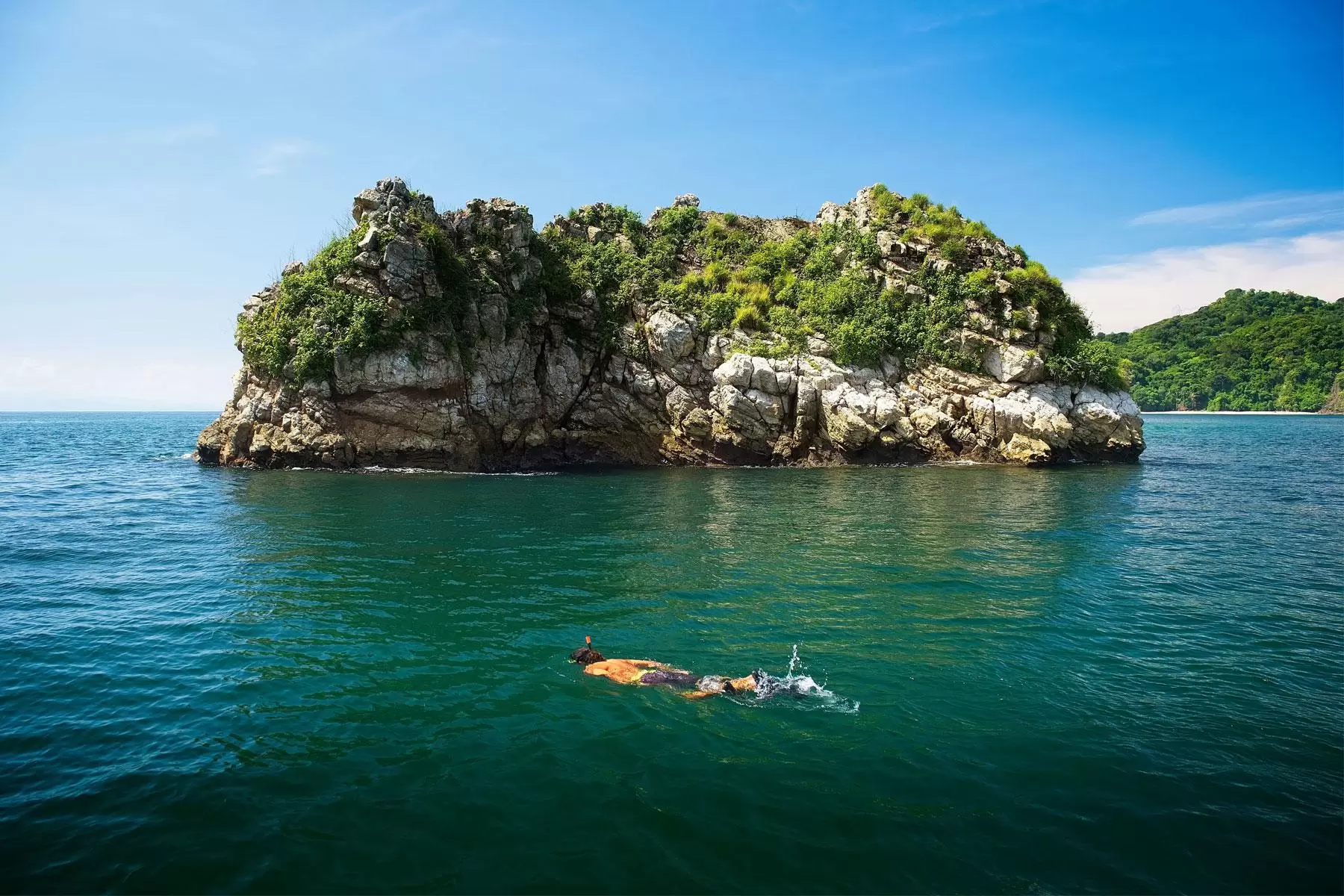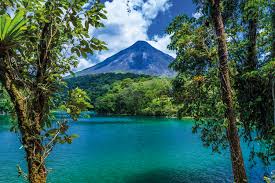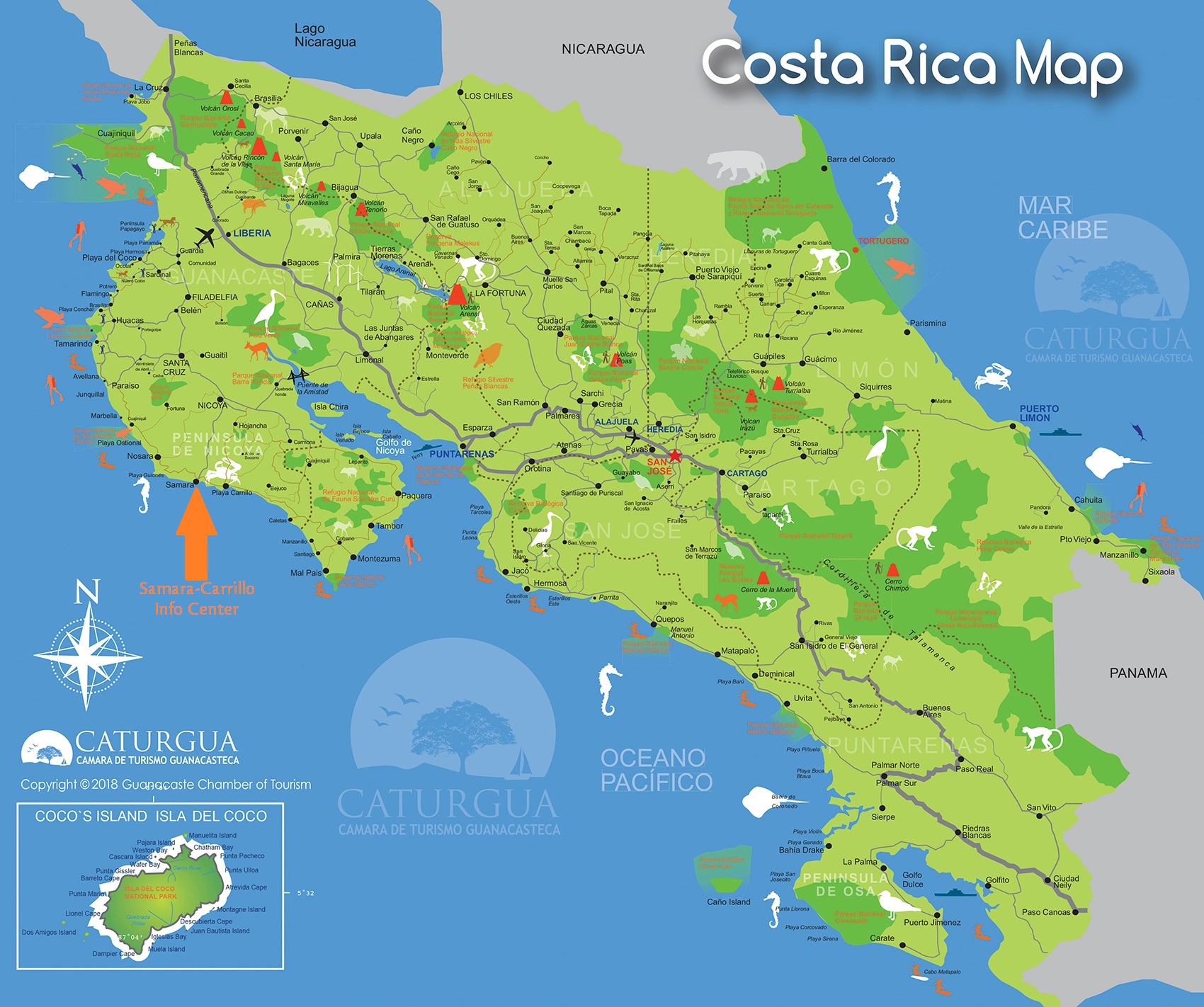







General Information
Costa Rica has two coasts and with that, two main cultures. On the Pacific Ocean, typically are the Ticos
(Costa Ricans) and on the Atlantic Ocean, especially in and around Limon, is an English-speaking, Jamaican
influenced African-Caribbean culture. A high altitude change throughout the central part of the country
offers all ranges of precipation levels creating hundred of mico climate zones. If the desire is to experience
a warm and dry climate with seasonal changes, or a jungle to still see the autumn colors in a variety of trees,
then the dry forests of the northwest Pacific Coast of Costa Rica in the Guancaste province could be your choice.
Tropical climates along thecoasts to highland climates occur in all altitudes throughout the mountainous country
offering the greatest variety of temperature zones; one of them surely will fit your definition of "perfect climate".
Culture/Histroy
The first European explorer to encounter Costa Rica was the Great Navigator himself, Christopher Columbus.
The day was September 18, 1502, and Columbus was making his fourth and final voyage to the New World.
As he was setting anchor off shore, a crowd of local Carib Indians paddled out in canoes and greeted his
crew warmly. Later, the golden bands that the region's inhabitants wore in their noses and ears would
inspire the Spaniard Gil Gonzalez Davila to name the country Costa Rica, or Rich Coast. Archaeologists now
know that civilization existed in Costa Rica for thousands of years before the arrival of Columbus,
and evidence of human occupation in the region dates back 10,000 years. Among the cultural mysteries
left behind by the area's pre-Columbian inhabitants are thousands of perfectly spherical granite bolas
that have been found near the west coast. The sizes of these inimitable relics range from that of a
baseball to that of a Volkswagen bus. Ruins of a large, ancient city complete with aqueducts were recently
found east of San Jose, and some marvelously sophisticated gold and jade work was being wrought in the
southwest as far back as 1,000 years ago. Some archeological sites in the central highlands and Nicoya
peninsula have shown evidence of influence from the Mexican Olmec and Nahuatl civilizations.
Food
The word casado means married (or caught) in Costa Rica. Casado is what a family meal is expected to
appear on any table or kitchen counter for lunch. There is no eternal commitment to the plate because
it varies according to the tastes of each household. Some even prefer to add some snacks like tortilla
chips to their lunch. It is made mostly of rice and beans, one or two slices of fried sweet plantains,
vegetables, coleslaw and an omelet. Usually it is complemented by steak, chicken, fish or pork. There
are also vegetarian variations with some fresh avocado, eggplant or white cheese.
The casado is a fundamental meal in the tico diet. Casados are relatively easy to make, cheap and filling.
It became popular in the past because larger families without a lot of money could feed everyone with
ingredients they usually already had in their houses. The traditional casado also energized the people
who built Costa Rica. You’ll never leave the table hungry after eating a casado. They are full of proteins,
vegetables and carbohydrates that will keep you going all day!
Arroz con Pollo is a favorite dish throughout Central America. In Costa Rica, it is popular as a birthday
party meal that can feed the masses. It is made of chicken rice – a mixture of yellow rice, peas, carrots,
corn and chicken strips. The rice is colored with Achiote (Bixa Orellana) and is best served with mashed
black beans, french fries or chips.
Gallo Pinto – meaning spotted rooster – is by far the favorite food of Costa Rica. It is so good that is
served everywhere after 10:00 am with a cup of coffee. What makes it so good if it’s just mixed rice
and beans? Each Costa Rican has its own way to prepare Gallo Pinto. It can include bananas, eggs,
tortillas and fresh sour cream. Some use copious amounts of cilantro (coriander) while preparing
Gallo Pinto, others use onions and garlic. But what makes it so unique is the special sauce: Lizano.
Salsa Lizano is Costa Rica’s favorite condiment, thanks to the Lizano company. This brown sauce goes w
ell with anything: White rice, eggs, toast, meat, beans and anything you could add salt to. Salsa means
sauce and Lizano’s the family name this sauce is named after. Salsa Lizano is so delicious and widely
used in Costa Rica that it has become patrimonial to the country’s identity. Some cooks will not consider
a dish as Costa Rican cuisine unless Salsa Lizano is added to it.
Ever wondered what the traditional Christmas dish is for Costa Rica? The authentic Costa Rican tamales include rice
, beans and potatoes served on banana leaf. They can also include meat like beef, chicken of pork.